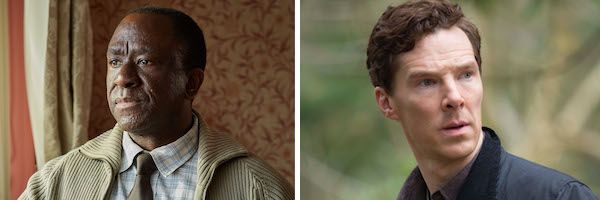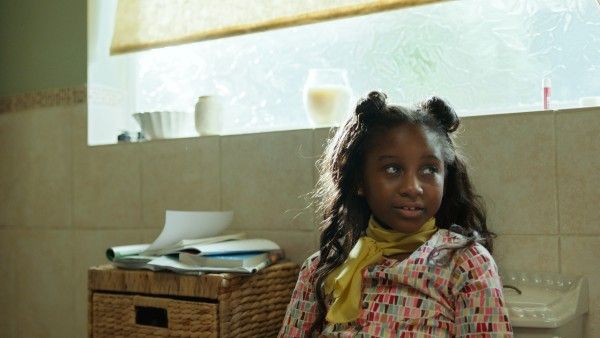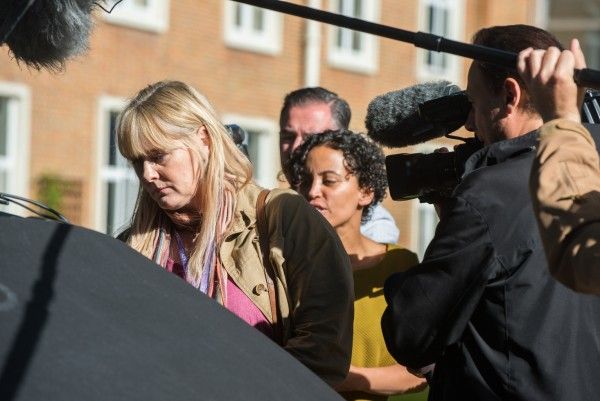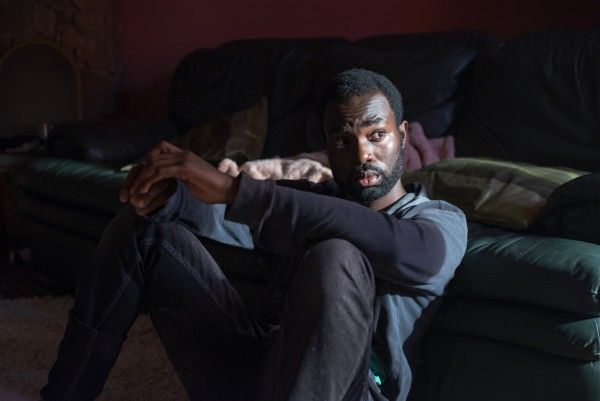It seems significant that two new British dramas premiering within a week of each other in the U.S. — one a movie, one a miniseries — would both be delving into the grief of losing a child. And yet, the film The Child in Time on PBS and Hulu’s National Treasure: Kiri explore that loss in completely different ways. Kiri, a new installment of what has become the National Treasure anthology, focuses largely on image and the role the media plays both in its dogged invasion of the private lives of those affected, and how it shapes the national conversation around a tragic event. The Child in Time skips over the media frenzy altogether, and though it technically takes places in the present, that choice to keep the story personal and removed from the initial event feels of a different time.
Kiri comes from Jack Thorne, (Harry Potter and the Cursed Child), and explores the aftermath of the disappearance of a young black girl, Kiri (Felicia Mukasa), who is about to be adopted by a wealthy white family. The prime suspect in her abduction is her biological father Nathaniel (Paapa Essiedu), a drug addict with a history of violence, aided potentially by his father Tobi (Lucian Msamati). Ultimately, all of this is caused by the supposed negligence of a white social worker, Miriam (Sarah Lancashire) who took a risk to keep Kiri connected to her cultural heritage. The racial implications are clear, but the four-part series broaches it without really having the time to go deep enough into the discussion to make a clear statement. In some ways it’s reminiscent of the recent four-part crime series Collateral on Netflix, which also touches upon some difficult politics as its investigates a complex crime involving race and immigration, as well as the Starz miniseries The Missing, which has dealt with two different perspectives about child abduction. Yet it doesn’t quite hit the same high marks as either.
Kiri also, ambitiously, tells its story from several different points of view, starting with a focus on Miriam in the first episode, Tobi in the second, and then Kiri’s foster mother Alice (Lia Williams). The fourth hour shifts somewhat to Alice’s biological son Simon (Finn Bennett) as the case comes to a close (for viewers at least), but the trouble with all of these different perspectives is that they all, especially Miriam and Tobi, demand the attention of a full series (Lancashire and Msamati are absolutely outstanding). Cutting between their stories kills some of the series' momentum, and further muddles the points it seems to want to make. There’s so much more to explore far beyond the outcome of the crime, but Kiri ultimately sets that aside to make room for a mystery whose final reveal is far less interesting than the exploration of emotional fallout that came before it.
The Child in Time’s approach is the exact opposite. We move away from the abduction of Stephen (Benedict Cumberbatch) and Julie’s (Kelly Macdonald) four-year-old daughter almost immediately. After a few quick scenes of the horror, confusion, and grief of those early days, Stephen Butchard’s script (based on a 1987 novel by Ian McEwan) fast-forwards to several years later, where Stephen and Julie — still married, but estranged and living apart — begin to find their way back to one another. The magnitude of their loss informs everything in their lives, but The Child in Time picks up at an unusual place when it comes to the story of a missing child, one where the parents (even though still stricken with uncertainty) begin to find their own lives again.
Parallel to Stephen and Julie’s story is that of Stephen’s close friend Charles (Stephen Campbell Moore), a brilliant political mind who has quit that life to move to the country with his wife (Saskia Reeves). There, Charles begins to seek his own lost childhood by becoming a child again in his thought and dress and actions. Director Julian Farino keeps the camera close and always in motion throughout the film, which gives a rightfully unsteady feeling to the proceedings. As Charles seems to be devolving into madness in search of his lost self, Stephen and Julie start coming out of their madness of searching for their lost daughter. The time motif plays an important and almost supernatural role in the story, but its effects are more poetic than anything. Over and over again, the adults of the story see or have seen children that aren’t really there, and yet, they represent important feelings.
Both Kiri and The Child in Time focus in on small moments, conversations, and intimate interiors, although The Child in Time’s attention to the specific grief of one couple facing a void of the unknown makes it a truly devastating watch that leaves a lasting impact. It’s not a typical portrait of grief, and its style may be off-putting, but it seeks to explore loss beyond words without words. It’s more of a series of experiential vignettes that want you to feel something that is intangible and complicated. It also concludes on a note of hope, somewhat restoring the balance of its dark meditation. Kiri’s finale, meanwhile, hints at a more nebulous kind of hopeful possibility, one that seems to start an entirely different story — for better or worse.
Nobody does a mystery quite like the British, and their productions are always so well-stocked with exceptional performances. It’s where both Kiri and The Child in Time succeed no matter any other quibbles, though both could use even more time to explore these complex narratives. Still, closure is important, and both find ways to address it. “Remember her,” Alice says of Kiri. The core of both stories is that this kind of grief is never forgotten.
Rating: The Child in Time - ★★★★ | National Treasure: Kiri - ★★★
The Child in Time premieres Sunday, April 1st on PBS; National Treasure: Kiri premieres Sunday, April 8th on Hulu.






